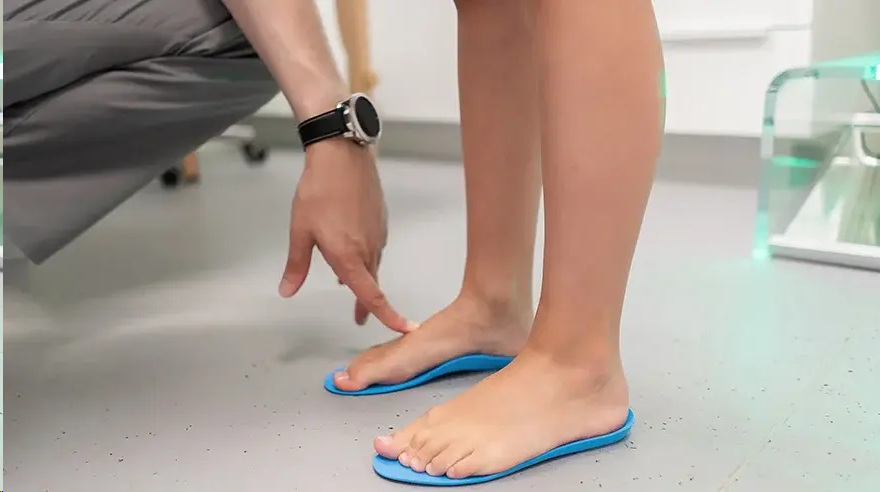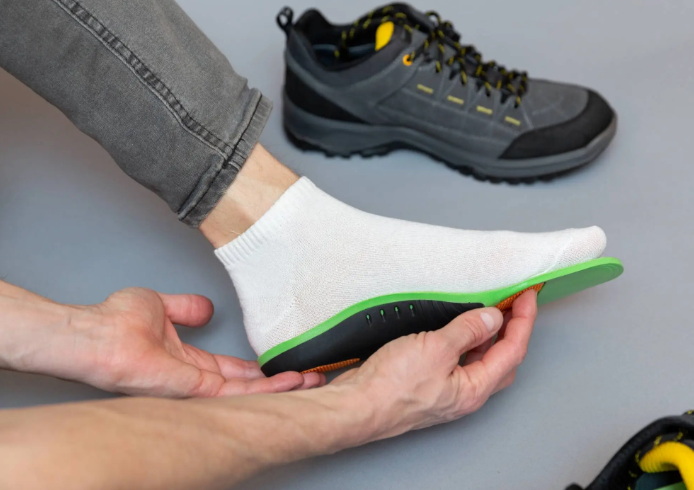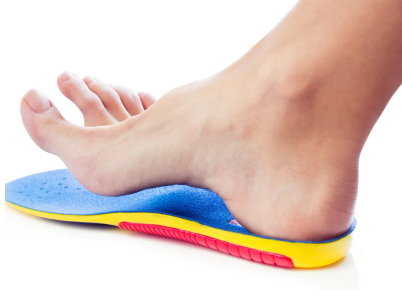Views: 222 Author: Edvo Publish Time: 2025-10-20 Origin: Site











Content Menu
>> Types of Insoles Common in the Market
● Orthotics vs. Insoles: Key Differences
● Should Orthotics Be Worn with Insoles?
● The Biomechanical Balance: Cushioning vs. Support
● Using Orthotics and Insoles in Different Shoe Types
>> 2. Work Boots and Safety Shoes
>> 4. Medical and Rehabilitation Footwear
● Benefits of Combining Orthotics and Insoles
>> Adaptability Across Markets
● Potential Challenges and Design Risks
>> Cost and Production Complexity
● OEM Manufacturing Insights from China
>> International Market Advantages
● Design Trends: Where Comfort Meets Technology
● Maintenance Tips for End-Users
● FAQs
>> 1. Can both orthotics and insoles fit inside running shoes?
>> 2. How can manufacturers design shoes that support both?
>> 3. How often should insoles and orthotics be replaced?
>> 4. Do consumers notice the difference between soft insoles and orthotics?
>> 5. Can orthotics be designed for fashion shoes?
In the modern footwear market, comfort and performance are no longer luxuries — they are expectations. Consumers are increasingly aware of foot health and the impact of shoe design on daily comfort and posture. As brands seek innovative ways to improve user experience, the question often arises: Should orthotics be worn with insoles?
As one of China's leading OEM insole manufacturers, we have worked with numerous international brands, wholesalers, and footwear producers who want to integrate both technologies into their product lines. This article explores whether orthotics insole should be worn with insoles, how to balance fit and function, and what manufacturers and distributors need to consider when developing products for diverse markets.

Insoles are the removable layers placed inside shoes to enhance comfort, cushioning, and stability. They can be simple foam sheets or advanced designs incorporating multi-density materials to support different areas of the foot.
Modern insoles do far more than add softness — they can help correct minor alignment problems, improve posture, and distribute pressure evenly during walking or running. Many global footwear brands now view insoles as a customizable comfort component rather than a simple accessory.
- Comfort Insoles: Focused on soft cushioning and shock absorption for casual wear.
- Support Insoles: Designed with firmer materials that stabilize the arch and heel.
- Heat-Moldable Insoles: Formed to individual foot contours using heat.
- Gel or Memory Foam Insoles: Offering high rebound and adaptive cushion feel.
- Medical-Grade Insoles: Used in therapeutic or rehabilitation applications.
Depending on the user's lifestyle — sports, daily commuting, standing for long periods — each insole category serves a unique purpose. International buyers often seek OEM customization to adjust density, materials, or branding elements according to their target market.
Orthotics are medical or semi-medical devices engineered to correct specific biomechanical issues such as overpronation, flat feet, or chronic heel pain. While insoles mainly focus on comfort, orthotics provide structural support and alignment correction critical for health and performance.
Unlike generic insoles, orthotics often use durable composite materials such as polypropylene or carbon fiber, helping realign the foot and lower limb through precise anatomical correction.
Some are fully custom-made based on 3D foot scans, whereas others follow semi-custom templates adjusted by healthcare professionals.
- Chronic plantar fasciitis or heel spur pain
- Flat arches or collapsed midfoot structure
- Hyperpronation or supination (ankle rolling)
- Post-injury rehabilitation for ankle or knee stability
- Gait imbalance or lower limb discrepancy
For patients with orthopedic conditions, orthotics act almost like braces for the feet — stabilizing movement and improving the chain alignment from the ankle to the spine.
While both are inserted into shoes, the purpose and design of orthotics differ greatly from commercial insoles.
| Aspect | Orthotics | Insoles |
|---|---|---|
| Core Purpose | Correct biomechanical and structural issues | Enhance comfort and reduce fatigue |
| Customization | Often prescribed or semi-custom | Mostly universal, customizable in OEM production |
| Rigidity Level | Semi-rigid to rigid materials | Soft or medium-flex materials |
| Target Users | Medical or professional use | General consumers, athletes, and casual users |
| Typical Lifespan | 1–3 years of use | 3–12 months depending on intensity |
Understanding these differences helps brand owners decide whether to offer orthotics, insoles, or hybrid solutions.

This is a common and important question — not only for end-users but also for footwear designers and sourcing professionals. Technically, orthotics already function as a highly supportive insert; adding an extra insole may alter shoe fit or interfere with its purpose. However, in some cases, wearing both can be beneficial if managed carefully.
If the insole is very thin and flexible, laying it over or under the orthotic might add additional cushioning without affecting alignment. This combination can work well in sports shoes or work boots where users stand for many hours. It is also popular among military or industrial workers who need shock absorption and support simultaneously.
Medical-grade orthotics, designed to correct foot posture precisely, should rarely be layered with another thick insole. Adding extra padding can raise the heel too high, cause tightness, and shift the foot's position — negating the orthotic correction.
A safe practice for brands is to design shoes that come with a removable insole, allowing users to decide whether they prefer using their orthotic independently or with a thin comfort layer.
Footwear comfort depends on achieving balance between cushioning (shock absorption) and structural support (alignment). Orthotics primarily address support, while insoles enhance cushioning.
When combined thoughtfully, both can complement each other. For example, a running shoe might feature a contoured orthotic base paired with a soft top insole to manage repetitive impact and fatigue during long-distance activity.
Manufacturers designing for premium markets often use dual-density constructions — combining a firm stabilizing layer for controlled motion with a soft topcoat that protects joints and skin.
Runners and athletes often benefit from combining custom orthotics with lightweight insoles, as it allows biomechanical correction while maintaining cushioning during high-impact motion.
Orthotics support prolonged standing and reduce fatigue; thin anti-sweat insoles can add comfort and odor control.
Fashion designs typically have limited shoe volume. When adding orthotics, the original insole is usually removed to maintain fit and appearance.
Specialized medical shoes frequently come with both an orthotic component and comfort layer, supporting precise foot alignment and patient recovery.
Even the best orthotic focuses on structural correction, which may feel firm. Adding a comfort insole helps smooth out pressure zones, protecting delicate tissues such as the heel pad or forefoot during prolonged walking.
Insoles can serve as disposable protective covers for orthotics, absorbing sweat and impact that would otherwise wear down the material. This helps maintain hygiene and extends product life.
Shoes designed to support both features can target wider customer bases — from medical users to fashion-conscious consumers seeking comfort technologies.
For international brands, offering a modular insole system is a competitive advantage. Removable layers encourage customization, after-sales upselling, and enhanced user satisfaction.
Adding both layers can reduce shoe space, causing tension across toes or sides. Shoe interior dimensions should be adjusted during OEM production to accommodate inserts without compromising ergonomics.
Dual-insert footwear designs may require additional molding stages, removable footbeds, and layered materials. Brands should evaluate how these features impact pricing in different market segments.
If orthotics and insoles are mismatched in shape or rigidity, they can shift under the foot, causing instability. Manufacturers must conduct pressure tests to ensure consistent alignment under load.
In global sourcing, Chinese manufacturers are leading R&D in both comfort and corrective footwear technology. Our factory specializes in producing both orthotic bases and layered foam insoles for configurable shoe designs.
- Customized material selection (EVA, PU, TPR, latex, TPU gel)
- CNC and 3D mold development for orthotic shells
- Breathable fabric lamination and anti-bacterial coatings
- Development of lightweight midsoles compatible with orthotic inserts
- Private label packaging and branding support
Global importers seeking long-term collaboration should focus on manufacturers with integrated design, testing, and laboratory certification experience.
Working with a trusted OEM partner in China allows brands to maintain strict quality while benefiting from flexible minimum order quantities and design diversity. Developing custom molds and testing sample runs ensures smooth large-scale production.
Modern insole surfaces feature textured zones that promote microcirculation and foot massage. These reduce fatigue during continuous motion and enhance consumer satisfaction.
Emerging smart footwear incorporates embedded chips that track foot pressure and motion data. Brands integrating such systems can offer app-based gait analysis, appealing to high-end athletic and health-conscious markets.
Eco-friendly materials like recycled EVA, cork composites, and bamboo charcoal foam have become increasingly popular in global footwear production. They not only enhance breathability but also strengthen brand positioning in the sustainable market segment.
Our R&D department recently developed a hybrid design known as the dual-responsiveness insole, which integrates a flexible correction plate between two foam layers. The result provides sufficient stabilizing support without sacrificing softness.
This innovation captures the essence of orthotic science while maintaining the mass-market affordability of comfort insoles. Partner brands who adopted this design have reported improved consumer retention and higher product reviews in online platforms.
- Always remove inserts to air-dry after long wear.
- Avoid excessive heat exposure that may deform orthotic materials.
- Replace comfort insoles periodically depending on wear frequency.
- For orthotics, periodic reassessment by specialists ensures fit accuracy.
Educating customers after purchase improves satisfaction and reduces product complaints, which can enhance the brand's long-term reputation.
So, should orthotics be worn with insoles? The answer depends on individual conditions and shoe design. In many cases, combining both elements can elevate comfort and reduce strain if properly fitted. For casual and athletic wear, a thin insole atop an orthotic creates a perfect balance between softness and corrective stability. For medical-grade orthotics, however, layering should be approached cautiously to prevent misalignment.
For international footwear brands and wholesalers, collaborating with professional Chinese OEM manufacturers allows access to a complete range of insoles, orthotic bases, and dual-layer systems. By incorporating both technologies into product catalogs, your business can expand into new markets — from medical distributors to fashion and sports retailers — enhancing global competitiveness through innovation and comfort.

Yes, but only if the running shoe has a removable factory insole and enough interior volume. The orthotic should sit securely without causing pressure or slipping during motion.
By incorporating deeper heel cups and adjustable removable insoles, OEM footwear can accommodate orthotics while maintaining comfort.
Comfort insoles should be replaced every 6–12 months. Orthotics may last up to several years, depending on user activity, material durability, and environment.
Yes. Insoles provide cushioning, while orthotics deliver correction. Combining them creates a balanced underfoot feel that enhances stability and reduces fatigue.
Absolutely. Many OEM manufacturers now produce slim-profile orthotics compatible with dress shoes, ensuring both aesthetic appeal and biomechanical support.